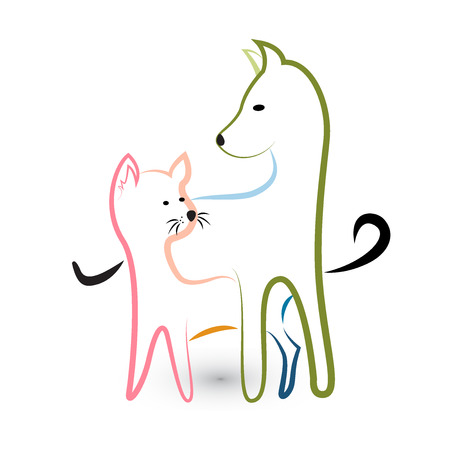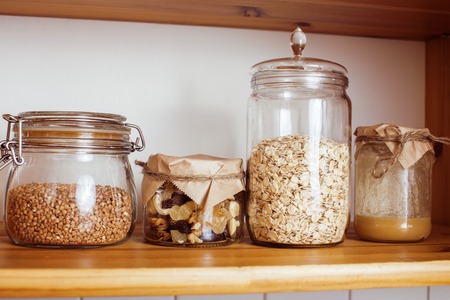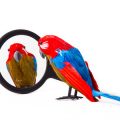What Are Carbohydrates in Cat Food?
When you take a look at the ingredient list on a bag or can of cat food, you might notice things like corn, rice, peas, potatoes, or even sweet potatoes. These are all sources of carbohydrates. But what exactly are carbohydrates in cat food, and where do they come from?
Overview of Common Carbohydrates in Cat Food
Carbohydrates are one of the main types of nutrients found in both dry and wet cat foods. While cats are obligate carnivores and primarily need protein and fat from animal sources, many commercial cat foods include carbohydrates for various reasons. The most common carbohydrate sources in cat food come from grains, legumes, and vegetables.
Typical Sources of Carbohydrates in Cat Food
| Source Type | Examples | Why Theyre Used |
|---|---|---|
| Grains | Corn, rice, wheat, barley, oats | Add bulk and texture; cost-effective energy source |
| Legumes | Peas, lentils, chickpeas | Add fiber; help bind kibble together; sometimes used as a grain-free option |
| Vegetables | Potatoes, sweet potatoes, carrots | Provide fiber; add vitamins and minerals; alternative to grains for pets with sensitivities |
How Carbohydrates Get Into Your Cats Food
Most commercial cat foods—especially dry kibble—rely on carbohydrates to help hold the food together. Without these ingredients, it would be tough for manufacturers to create those crunchy kibbles that many cats enjoy. Even in canned or wet foods, small amounts of carbohydrates may be included for texture and consistency.
If youre curious about which carbohydrates are present in your cats food, check the ingredient list on the packaging. Ingredients are usually listed by weight, so those listed near the top make up more of the foods content.
2. Cats’ Natural Diet: Carnivores by Design
When we talk about what cats should eat, it helps to look at what they would choose in the wild. Cats are known as obligate carnivores. This means their bodies are made to get all the nutrition they need from animal sources, not plants or grains. Let’s take a closer look at what this really means for your feline friend.
The Evolution of the Cat’s Diet
Cats evolved as hunters. Their ancestors survived by catching and eating small animals like mice, birds, and insects. These prey animals provided protein, fat, vitamins, and minerals—everything a cat needs to stay healthy. Unlike dogs or humans, cats do not naturally eat fruits, vegetables, or grains in large amounts.
What Wild Cats Eat vs. What’s in Cat Food
| Wild Cat Diet | Typical Commercial Cat Food |
|---|---|
| High protein (from meat) | Protein from meat and sometimes plants |
| High fat (from animal sources) | Fat from animal or plant oils |
| Low carbohydrates (almost none) | Often moderate to high carbs (corn, rice, wheat) |
| Moisture-rich (from prey) | Dry food is low in moisture; wet food is higher |
Cats’ Unique Nutritional Needs
Cats’ bodies work differently than ours because of their carnivorous background. Here are a few important points:
- Amino acids: Cats need certain amino acids like taurine that are found only in animal tissue.
- Vitamins: They require vitamin A and some B vitamins from animal sources—they can’t make these from plants.
- No need for carbs: Unlike people, cats don’t need carbohydrates for energy. Their livers use protein and fat to fuel their bodies.
Fun Fact: Why Don’t Cats Crave Sweets?
Cats actually lack taste receptors for sweetness! That’s one reason they aren’t drawn to carbohydrate-rich foods like some other pets might be.

3. Why Carbohydrates Are Added to Cat Food
Many cat owners wonder why carbohydrates show up in the ingredient list of their cat’s food, especially since cats are obligate carnivores and don’t need carbs for survival. Let’s break down some of the main reasons manufacturers include carbohydrates in commercial cat foods, especially dry kibble.
Manufacturing Reasons for Adding Carbohydrates
Cost-Effectiveness
Carbohydrates like corn, rice, barley, and potatoes are generally less expensive than animal-based proteins. By using these ingredients, pet food companies can keep production costs down and offer more affordable products to customers.
Kibble Structure and Texture
Carbs play a key role in forming the crunchy texture of dry kibble. Starches act as binding agents that hold the kibble together during cooking and shaping processes. Without carbohydrates, it would be difficult to create the familiar crunchy nuggets that many cats enjoy.
Shelf Stability
Carbohydrate ingredients help extend the shelf life of cat food by reducing moisture content and providing stability. This means the food stays fresh longer and is less likely to spoil during storage or transportation.
Benefits of Carbohydrates in Cat Food Manufacturing
| Reason | How It Helps |
|---|---|
| Cost-Effectiveness | Makes cat food more affordable for pet owners |
| Kibble Structure | Allows formation of crunchy, appealing kibble shapes |
| Shelf Stability | Keeps food fresher for longer periods on store shelves |
Nutritional Considerations
While carbs aren’t essential for cats’ nutrition, they do offer an easy-to-digest energy source and can sometimes provide fiber for digestive health. However, it’s important to remember that protein should always be the main focus in your cat’s diet.
4. Potential Benefits and Concerns of Carbohydrates for Cats
Carbohydrates in cat food are a hot topic among pet parents and veterinarians. While cats are natural carnivores, many commercial cat foods contain carbs. Lets break down how carbohydrates can affect your cat’s health, both positively and negatively.
Energy Source
Cats mainly get their energy from protein and fat, but carbohydrates can provide a quick source of energy too. In dry cat food (kibble), carbs help hold the pieces together and keep the food shelf-stable. However, because cats don’t naturally need high amounts of carbs, some experts recommend keeping them at moderate levels.
Digestion
Some carbohydrates, especially fiber, can support healthy digestion. Fiber helps move hairballs through the digestive tract and may improve stool quality. However, too many indigestible carbs may cause loose stools or upset stomachs.
| Carbohydrate Type | Potential Digestive Effect |
|---|---|
| Soluble Fiber (e.g., beet pulp) | Promotes gut health, helps with stool consistency |
| Insoluble Fiber (e.g., cellulose) | Aids in hairball control, increases stool bulk |
| Sugars/Starches | Quick energy but may lead to digestive upset if fed in excess |
Obesity Risk
One big concern with carbs is weight gain. Cat foods high in carbohydrates can be more calorie-dense and less filling than diets rich in protein and moisture. This means indoor cats who eat a lot of kibble might be at higher risk for obesity if portions aren’t controlled. Overweight cats face additional health risks like joint pain and heart issues.
Diabetes Considerations
Cats that eat a diet high in certain types of carbohydrates—especially simple sugars—may be more likely to develop diabetes, especially if they are already overweight or inactive. Some studies suggest that lower-carb diets can help manage blood sugar levels in diabetic cats.
Summary Table: Carbohydrates & Cat Health
| Health Aspect | Possible Effect of Carbs | Notes for Pet Parents |
|---|---|---|
| Energy | Provides quick fuel but not essential for most cats | Good for active cats in moderation; not a requirement for all diets |
| Digestion | Aids digestion when fiber is present; too much can cause upset stomachs | Look for balanced fiber sources in ingredient list |
| Obesity Risk | Diets high in carbs may lead to weight gain if overfed | Monitor portion size and choose lower-carb options for less active cats |
| Diabetes Risk/Management | Simple carbs can worsen blood sugar problems; low-carb diets may help diabetic cats | If your cat is diabetic or at risk, talk to your vet about diet choices |
5. Finding the Right Balance in Your Cat’s Diet
Understanding Cat Food Labels
When choosing cat food, reading the label is a great place to start. In the U.S., pet food labels list ingredients by weight. You’ll also see a “Guaranteed Analysis” panel showing percentages of protein, fat, fiber, and moisture. To help you understand what to look for, here’s a simple table:
| Label Term | What It Means |
|---|---|
| Crude Protein | The minimum amount of protein in the food. |
| Crude Fat | The minimum amount of fat. |
| Crude Fiber | The maximum amount of fiber (includes some carbs). |
| Ingredients List | All ingredients in order of weight, from most to least. |
| Guaranteed Analysis | Nutritional breakdown by percentage. |
If you see grains or potatoes high up on the ingredients list, it means there are more carbohydrates in the food. Cats don’t need a lot of carbs, so look for foods with meat or fish as the first ingredient and fewer fillers like corn, wheat, or soy.
Talking to Your Veterinarian
Your vet knows your cat best! Before making big changes, ask your veterinarian about your cat’s specific needs. Some cats do fine with a little more carbohydrate in their diet—especially if they’re active or have certain health conditions—while others may need mostly protein and fat. Your vet can recommend brands or types that suit your cat’s age, health status, and lifestyle.
Questions to Ask Your Vet:
- Does my cat have any special dietary needs?
- Is grain-free food better for my cat?
- How much carbohydrate is okay in my cat’s diet?
- Should I choose wet or dry food?
Choosing the Best Food for Your Cat’s Needs
No two cats are exactly alike! When picking out food, keep these tips in mind:
- Lifestyle: Indoor cats might need fewer calories than outdoor explorers.
- Life Stage: Kittens, adults, and seniors all have different nutrition needs.
- Health Issues: Some cats need special diets for diabetes, allergies, or kidney problems.
- Picky Eaters: Try different flavors and textures to find what your cat likes most.
Quick Reference: Carbohydrate Content in Common Cat Foods
| Food Type | Typical Carbohydrate % (Dry Matter) |
|---|---|
| Canned (Wet) Food | 2%–12% |
| Dry Kibble | 20%–40% |
| Raw/Fresh Diets | <5% |
If you’re ever unsure about what’s best for your cat, don’t hesitate to reach out to your vet or a local pet nutritionist. Every cat deserves a diet that helps them feel their best!


